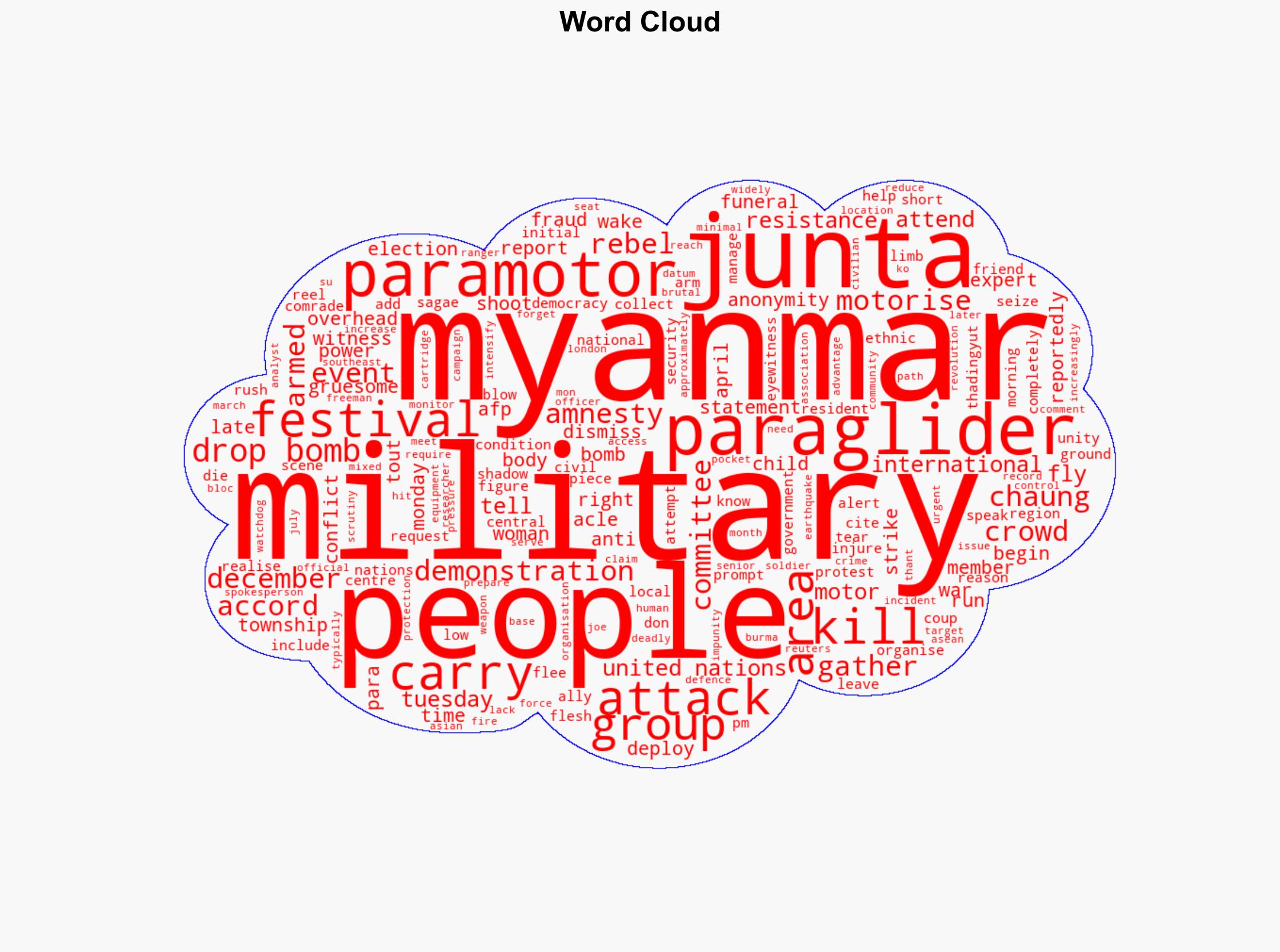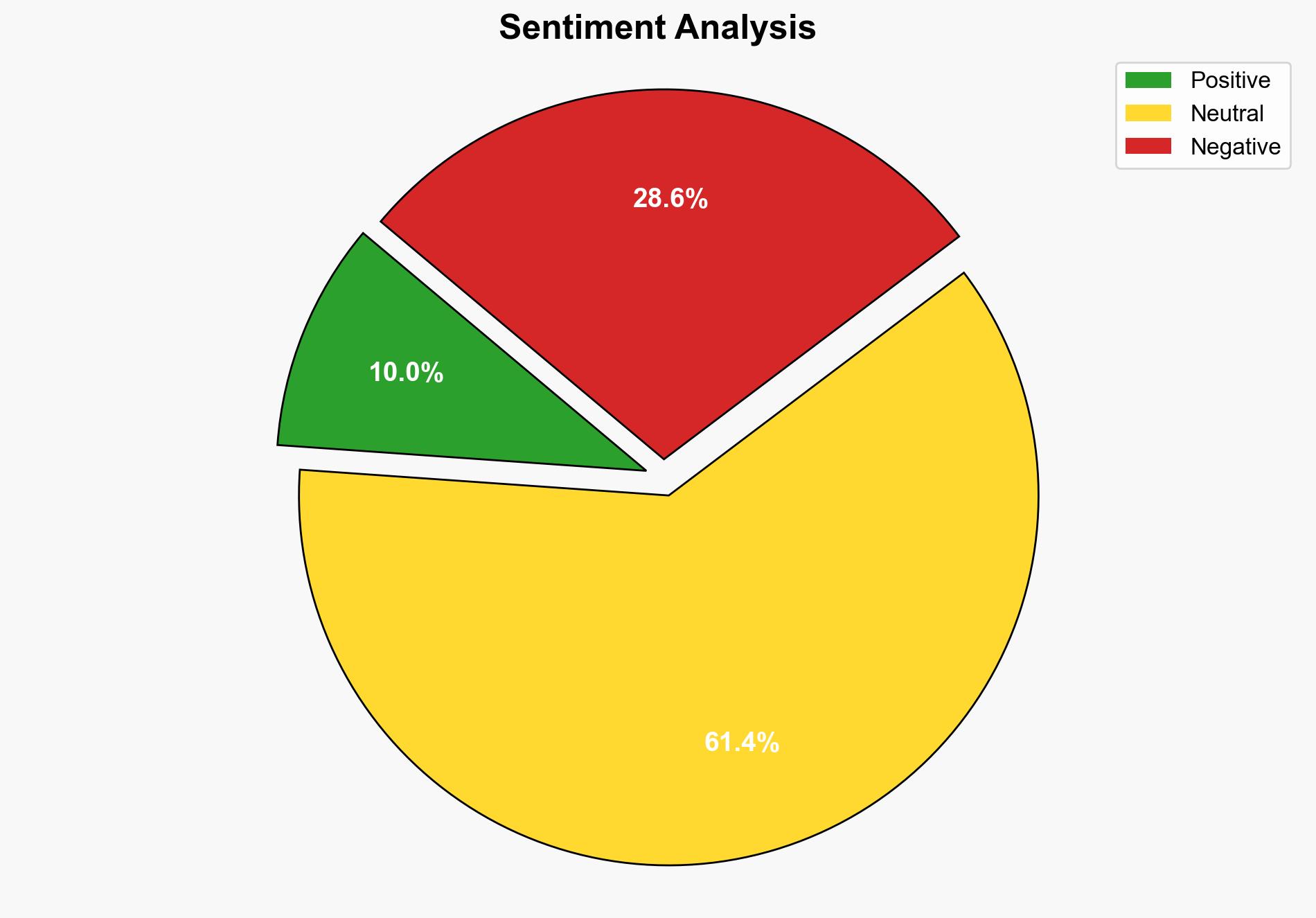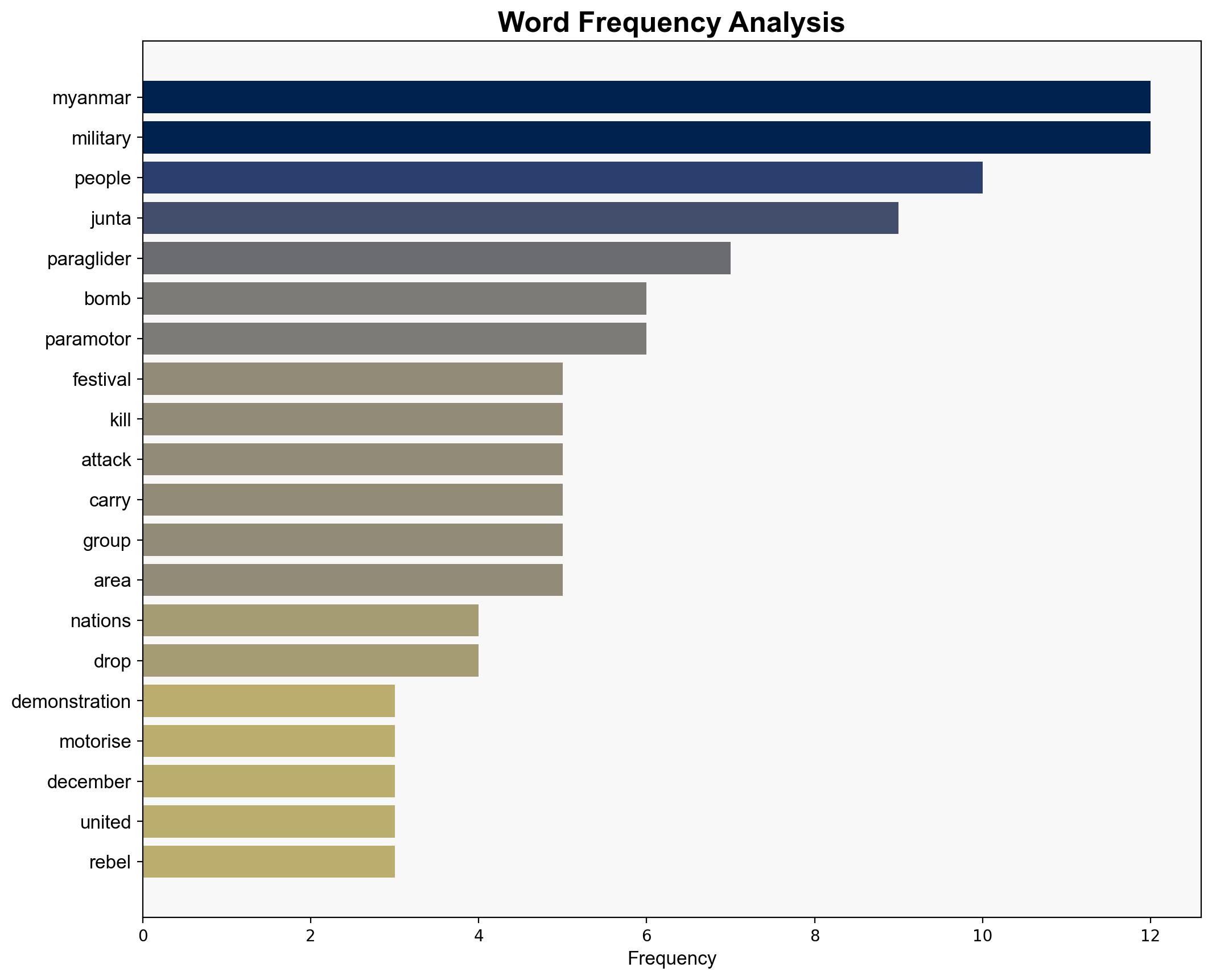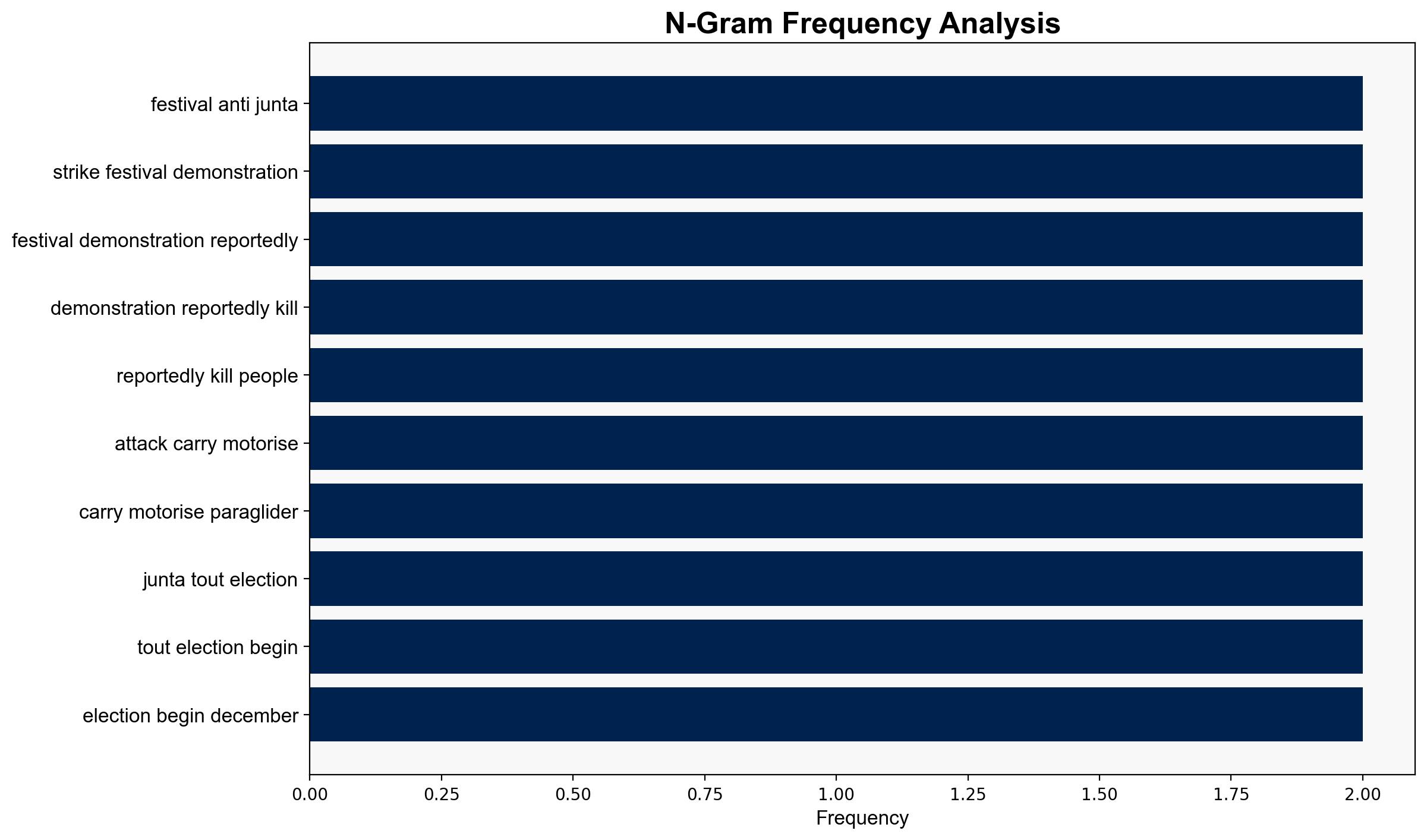Myanmar’s military strikes festival and anti-junta protest killing 40 – ABC News (AU)
Published on: 2025-10-08
Intelligence Report: Myanmar’s military strikes festival and anti-junta protest killing 40 – ABC News (AU)
1. BLUF (Bottom Line Up Front)
The most supported hypothesis is that the Myanmar military is intensifying its campaign against resistance groups and civilian gatherings perceived as anti-junta, using unconventional tactics like paramotor bombings. Confidence in this assessment is moderate due to limited independent verification. Recommended action includes increased international diplomatic pressure and monitoring to prevent further civilian casualties.
2. Competing Hypotheses
Hypothesis 1: The Myanmar military is deliberately targeting civilian gatherings, including festivals, to suppress anti-junta sentiment and intimidate the population. This is supported by reports of the military using paramotors to drop bombs on crowds, a tactic aimed at maximizing psychological impact and civilian casualties.
Hypothesis 2: The attacks are primarily aimed at armed resistance groups that may be present at these gatherings, with civilian casualties being collateral damage. This hypothesis suggests the military is targeting areas where they believe resistance fighters are active, using paramotors due to their ability to reach remote or mixed-control areas.
3. Key Assumptions and Red Flags
– Assumptions for Hypothesis 1 include the military’s intent to intimidate civilians and suppress dissent. A red flag is the lack of independent verification of the military’s intent.
– Assumptions for Hypothesis 2 include the presence of armed resistance at civilian gatherings. A red flag is the potential underreporting of civilian casualties, which could bias the interpretation of military intent.
– Potential cognitive bias includes confirmation bias, where reports may selectively highlight military aggression without considering strategic military objectives.
4. Implications and Strategic Risks
– Continued military aggression could lead to increased civilian casualties, exacerbating humanitarian crises and potentially drawing international condemnation.
– Escalation of violence may destabilize the region further, impacting neighboring countries and international relations.
– The use of unconventional tactics like paramotor bombings could set a precedent for future conflicts, complicating peace efforts.
5. Recommendations and Outlook
- Encourage international bodies to increase diplomatic pressure on Myanmar to cease attacks on civilian gatherings.
- Enhance monitoring and reporting mechanisms to verify incidents and gather evidence for potential war crimes investigations.
- Scenario-based projections:
- Best Case: International pressure leads to a ceasefire and dialogue between the military and resistance groups.
- Worst Case: Escalation of violence results in widespread civilian casualties and regional instability.
- Most Likely: Continued sporadic attacks with limited international intervention, prolonging the conflict.
6. Key Individuals and Entities
– Joe Freeman, Amnesty International researcher
– Su Mon, ACLED senior analyst
– Burma Revolution Ranger Group
7. Thematic Tags
national security threats, human rights violations, regional stability, unconventional warfare





